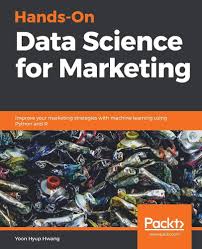Data Science for Marketing Analytics: A Comprehensive White Paper
1. Introduction
Data science has revolutionized the field of marketing, empowering businesses to make data-driven decisions that enhance customer experiences, increase ROI, and gain a competitive edge. This white paper explores key concepts, techniques, and use cases of data science in marketing analytics, drawing insights from the second edition of "Data Science for Marketing Analytics."
2. Key Concepts
- Data Collection & Preparation:
- Data Sources: Diverse sources including CRM, social media, website analytics, surveys, and third-party data providers.
- Data Cleaning & Transformation: Handling missing values, outliers, and inconsistencies to ensure data quality and accuracy.
- Data Integration: Combining data from various sources to gain a holistic view of customer behavior.
- Exploratory Data Analysis (EDA):
- Descriptive Statistics: Summarizing key characteristics of the data using measures like mean, median, and standard deviation.
- Data Visualization: Creating insightful charts and graphs (e.g., histograms, scatter plots) to identify patterns, trends, and anomalies.
- Predictive Modeling:
- Customer Segmentation: Grouping customers based on shared characteristics and behaviors.
- Customer Churn Prediction: Identifying customers likely to discontinue their relationship with the company.
- Demand Forecasting: Predicting future product demand to optimize inventory and production.
- Customer Lifetime Value (CLTV) Prediction: Estimating the long-term profitability of individual customers.
- Machine Learning Techniques:
- Supervised Learning: Algorithms that learn from labeled data (e.g., regression, classification).
- Unsupervised Learning: Algorithms that discover hidden patterns in unlabeled data (e.g., clustering, dimensionality reduction).
- Deep Learning: Advanced techniques for complex tasks like image recognition and natural language processing.
3. Use Cases
- Customer Segmentation:
- Example: A retail company uses clustering algorithms to segment customers based on purchase history, demographics, and browsing behavior. This allows them to tailor marketing campaigns and product recommendations to the specific needs and preferences of each segment.
- Reference: Chapter 4, "Customer Segmentation" in "Data Science for Marketing Analytics, Second Edition."
- Churn Prediction:
- Example: A telecommunications company builds a predictive model to identify customers at high risk of churning. Proactive outreach and personalized offers can be implemented to retain these valuable customers.
- Reference: Chapter 5, "Customer Churn Prediction" in "Data Science for Marketing Analytics, Second Edition."
- Personalized Marketing:
- Example: An e-commerce platform leverages customer data to deliver personalized product recommendations, targeted advertisements, and customized email campaigns.
- Reference: Chapter 6, "Personalization and Recommendation Systems" in "Data Science for Marketing Analytics, Second Edition."
- Marketing Campaign Optimization:
- Example: A marketing team uses A/B testing and multivariate testing to optimize the performance of email campaigns, website landing pages, and social media ads.
- Reference: Chapter 7, "Marketing Campaign Optimization" in "Data Science for Marketing Analytics, Second Edition."
- Social Media Marketing:
- Example: Analyzing social media data to understand customer sentiment, identify influencers, and track the effectiveness of social media campaigns.
- Reference: Chapter 8, "Social Media Analytics" in "Data Science for Marketing Analytics, Second Edition."
4. Benefits of Data Science in Marketing
- Improved Customer Understanding: Deeper insights into customer behavior, preferences, and needs.
- Enhanced Customer Experience: Personalized interactions and targeted offers that resonate with individual customers.
- Increased ROI: Optimized marketing campaigns with higher conversion rates and lower costs.
- Competitive Advantage: Gaining a deeper understanding of the market and outmaneuvering competitors.
- Data-Driven Decision Making: Replacing intuition with data-backed insights for more informed business decisions.
5. Conclusion
Data science has become an indispensable tool for modern marketers. By leveraging the techniques and tools discussed in "Data Science for Marketing Analytics, Second Edition," businesses can unlock the full potential of their customer data and achieve significant improvements in marketing performance.
References
- Baig, Mirza Rahim, Gururajan Govindan, and Vishwesh Ravi Shrimali. Data Science for Marketing Analytics, Second Edition. Packt Publishing, 2021.
Disclaimer: This white paper provides a general overview. Specific implementations and results will vary depending on the business context and the specific data science techniques employed.
Note: This is a sample white paper. You can expand on this by:
- Including more specific examples and case studies.
- Adding more in-depth discussions of key concepts and techniques.
- Incorporating visuals like charts and graphs.
- Adding a section on ethical considerations in data science for marketing.
I hope this provides a strong foundation for your white paper!



